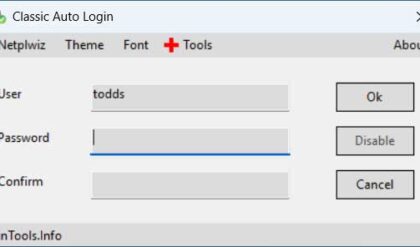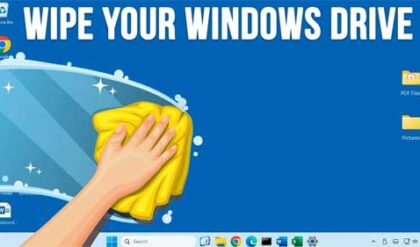Backups are an essential task that everyone needs to do in order to prevent yourself from losing valuable information and files on your computer. Many people will backup their files onto something like an external hard drive, flash drive or CD but what about backing up your operating system and programs themselves? If your computer crashes because of a Windows error that is unrecoverable then most people end up formatting their computer or using their recovery disks which puts their computer back to the state it was in when they bought it. That is fine but you will have to reinstall all your programs and updates as well as configure all your settings again.
Windows Vista and up allow you to make an image backup of your entire system (C:) drive so if you ever need to restore your whole computer back to a point in time because of a serious system crash that a repair can’t fix you can do so.
This is very similar to the recovery disks or partitions that many computers come with that allow you to restore the computer to the way it was when you bought it. The problem with the factory recovery disks is that any files you added will be lost and any programs you installed after you bought it will have to be reinstalled. With the Windows system image backup your backup will be as current as the day you made the backup. Keep in mind that it will backup your system drive, not any extra drives or partitions you have installed on your computer.
To create a system image backup open Control Panel and then go to Backup and Restore. From there click on Create a system image. The steps and images below are for Windows 7 computers and Windows Vista screens make look a little different.

Windows will ask you where you want to save the backup image to. You can choose another drive or partition as well as burning it to a DVD or copying it to a network location if you are on a network. Just make sure the device has enough free space for the backup.

Once you choose your backup location you can review your settings and then click on Start backup. It will tell you approximately how much space the backup will take although it doesn’t seem to be too accurate. One thing you can do is right click your C drive and choose Properties. Then make a note of the total disk space used and make sure your backup device has at least that much free space.

Next you will see a status bar of the backup progress. This will take some time to complete especially if you have a lot of data on your C drive.

Then you will be given the option to create a system repair disk which you can boot with to use the Windows recovery tools or restore the image you just made. This is a good idea to do if you dont have an actual Windows DVD to boot from.

Finally you will see a message saying the backup completed successfully.

To restore your image you can either use the recovery CD you made in the previous step or boot with your Windows DVD and choose the Repair your computer option and choose to restore your image.
You may get a message saying New bad clusters were found on the source volume. These clusters were not backed up.

If so then you should run a check disk with the repair option on your C drive to have Windows detect and find any errors. Open a command prompt as administrator by right clicking the command prompt icon and choosing Run as Administrator and type in chkdsk /R.

You will most likely get a message saying that the volume is in use by another process and if you would like to schedule this volume to be checked the next time the system restarts. Type in Y and reboot your computer and let the process run. It may take quite awhile depending on the size of your hard drive. Then after the computer reboots back into Windows try the system image backup again.






